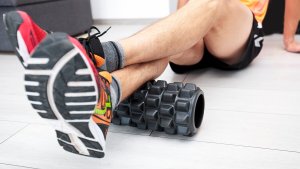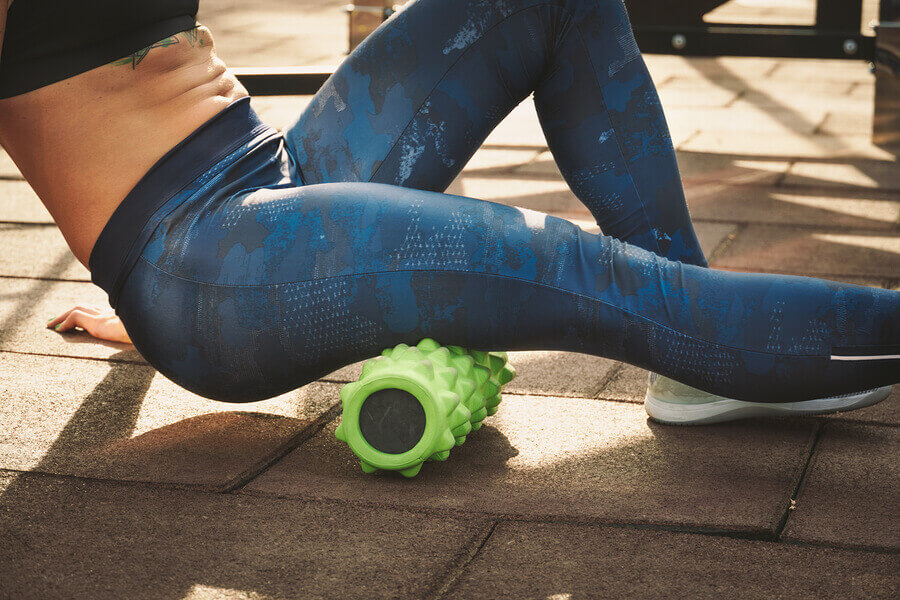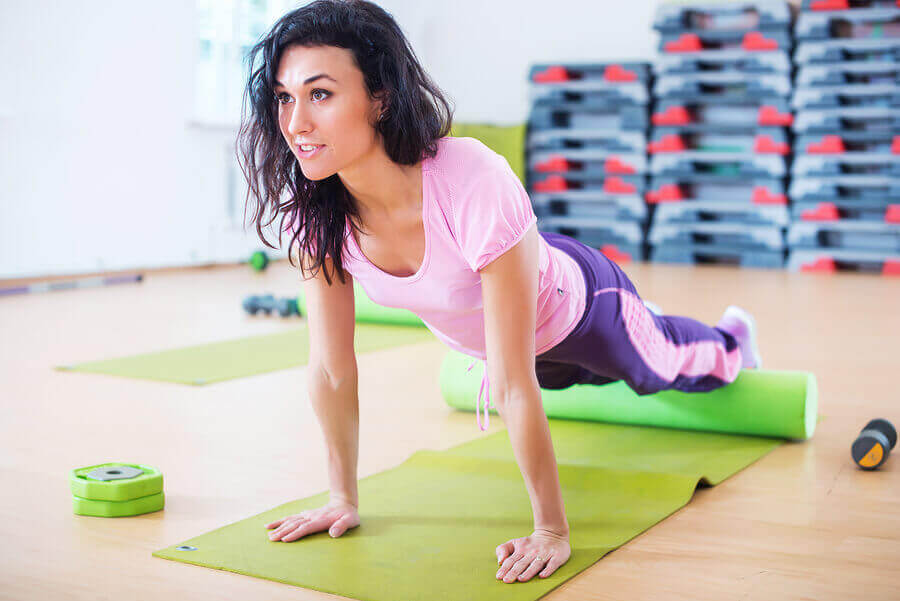Everything you Should Know about Foam Rollers

More and more people are trying out foam rollers to activate their muscles or relax before or after a workout session. In our post today, let’s take a closer look at foam rollers; discover what they can offer and how to use them.
What is a foam roller?
A foam roller, or myofascial release roller, is a cylinder-shaped tool that can be made of various materials; however, they’re always firm. Foam rollers allow users to apply a myofascial release technique on to their own bodies. Users use their own body weight over the roller, positioning themselves in a way to work or loosen a certain muscle.
There are two perspectives about rollers:
- The first claim is that foam rollers can increase flexibility and keep pain at bay.
- The second, less-backed claim defends them as ways to improve athletic performance.
What can foam rollers do for you?
As we mentioned earlier, foam rollers are great for activating muscles before a workout. Or, they can also help relax your body after you finish. Using a myofascial release roller has the following advantages:
- Stimulates and improves blood circulation.
- It can help loosen small knots that result from physical activity or labor.
- Pre-workout activation or post-workout relaxation.
- It can help lower muscle tension.
- Reduces muscle stress.

- Enhanced activation of muscle stabilizers.
- Improves flexibility.
- Corrects mobility problems. Rollers can reduce the amount of shortening that happens in certain muscle regions or structures.
- It helps nutrients travel more efficiently thanks to the improved circulation.
- Corrects certain muscular imbalances thanks to the mobility corrections mentioned above.
How can you use a foam roller?
If you want to add a foam roller to your routine, you need to consider a number of things. First, you have to choose a firmness and material.
There are two kinds of rollers: firmer and less firm. If you’re just starting out, you should try the less firm option first.
Next, apply pressure prudently. As you gain practice with your roller and improve your technique, add more pressure. By going progressively, you can prevent injuries.
Getting started
Start off slowly. First, apply a little pressure on the area that you want to work on. Try starting on a bigger muscle area first, such as your legs.
Slowly apply the pressure onto specific areas and keep it there for a few seconds. After, rollover your knee and cover as much as your muscle area as you want.
During the entire process, make sure that you take extra care when working around joints. These areas are full of tendons and soft points. In light of that, reduce the pressure until you move on to a different area.
When you use a foam roller after a workout session and want to pinpoint a certain pain, apply constant pressure to the area for a few seconds. After, roll the pressure around the area for at least 15 seconds.
When’s the best time to use a foam roller?
You can use foam rollers before or after workouts. If you decide to use it as a part of your warm-up, it can help you increase your range of movement and get your blood flowing thanks to the activation benefits.

Or if you decide to use it for your cool-down after your workout, it’ll help your muscles recover better.
Foam rollers in warm-ups
Until recently, warm-ups were mainly geared towards stretching. People simply used rollers to increase their flexibility before starting a workout.
But, in these past years, we started to understand that warm-up stretches can actually reduce strength capacity as well as muscle-contraction capacity.
Prevent that from happening with a foam roller; it can help you activate your muscles and increase flexibility before a workout without seeing a drop in strength capacity.
In addition, recent studies have shown that myofascial release rollers have no negative impact on athletic performance.
Foam rollers in cool-downs
Meanwhile, many people use rollers after workouts thanks to all the benefits they have. Adding it to the final part of a workout can help speed up muscle recovery after an intense workout. In addition, it can also help decrease injury risks and muscle damage.
Recent studies have shown that using a myofascial release roller to wrap up a workout can help reduce muscle pain while speeding up recovery time.
To sum up, foam rollers are a wonderful workout tool to consider. You can reap the special benefits pre- or post-workout.
More and more people are trying out foam rollers to activate their muscles or relax before or after a workout session. In our post today, let’s take a closer look at foam rollers; discover what they can offer and how to use them.
What is a foam roller?
A foam roller, or myofascial release roller, is a cylinder-shaped tool that can be made of various materials; however, they’re always firm. Foam rollers allow users to apply a myofascial release technique on to their own bodies. Users use their own body weight over the roller, positioning themselves in a way to work or loosen a certain muscle.
There are two perspectives about rollers:
- The first claim is that foam rollers can increase flexibility and keep pain at bay.
- The second, less-backed claim defends them as ways to improve athletic performance.
What can foam rollers do for you?
As we mentioned earlier, foam rollers are great for activating muscles before a workout. Or, they can also help relax your body after you finish. Using a myofascial release roller has the following advantages:
- Stimulates and improves blood circulation.
- It can help loosen small knots that result from physical activity or labor.
- Pre-workout activation or post-workout relaxation.
- It can help lower muscle tension.
- Reduces muscle stress.

- Enhanced activation of muscle stabilizers.
- Improves flexibility.
- Corrects mobility problems. Rollers can reduce the amount of shortening that happens in certain muscle regions or structures.
- It helps nutrients travel more efficiently thanks to the improved circulation.
- Corrects certain muscular imbalances thanks to the mobility corrections mentioned above.
How can you use a foam roller?
If you want to add a foam roller to your routine, you need to consider a number of things. First, you have to choose a firmness and material.
There are two kinds of rollers: firmer and less firm. If you’re just starting out, you should try the less firm option first.
Next, apply pressure prudently. As you gain practice with your roller and improve your technique, add more pressure. By going progressively, you can prevent injuries.
Getting started
Start off slowly. First, apply a little pressure on the area that you want to work on. Try starting on a bigger muscle area first, such as your legs.
Slowly apply the pressure onto specific areas and keep it there for a few seconds. After, rollover your knee and cover as much as your muscle area as you want.
During the entire process, make sure that you take extra care when working around joints. These areas are full of tendons and soft points. In light of that, reduce the pressure until you move on to a different area.
When you use a foam roller after a workout session and want to pinpoint a certain pain, apply constant pressure to the area for a few seconds. After, roll the pressure around the area for at least 15 seconds.
When’s the best time to use a foam roller?
You can use foam rollers before or after workouts. If you decide to use it as a part of your warm-up, it can help you increase your range of movement and get your blood flowing thanks to the activation benefits.

Or if you decide to use it for your cool-down after your workout, it’ll help your muscles recover better.
Foam rollers in warm-ups
Until recently, warm-ups were mainly geared towards stretching. People simply used rollers to increase their flexibility before starting a workout.
But, in these past years, we started to understand that warm-up stretches can actually reduce strength capacity as well as muscle-contraction capacity.
Prevent that from happening with a foam roller; it can help you activate your muscles and increase flexibility before a workout without seeing a drop in strength capacity.
In addition, recent studies have shown that myofascial release rollers have no negative impact on athletic performance.
Foam rollers in cool-downs
Meanwhile, many people use rollers after workouts thanks to all the benefits they have. Adding it to the final part of a workout can help speed up muscle recovery after an intense workout. In addition, it can also help decrease injury risks and muscle damage.
Recent studies have shown that using a myofascial release roller to wrap up a workout can help reduce muscle pain while speeding up recovery time.
To sum up, foam rollers are a wonderful workout tool to consider. You can reap the special benefits pre- or post-workout.
All cited sources were thoroughly reviewed by our team to ensure their quality, reliability, currency, and validity. The bibliography of this article was considered reliable and of academic or scientific accuracy.
- Healey, K. C., Hatfield, D. L., Blanpied, P., Dorfman, L. R., & Riebe, D. (2014). The effects of myofascial release with foam rolling on performance. The Journal of Strength & Conditioning Research, 28(1), 61-68.
- MacDonald, G. Z., Penney, M. D., Mullaley, M. E., Cuconato, A. L., Drake, C. D., Behm, D. G., & Button, D. C. (2013). An acute bout of self-myofascial release increases range of motion without a subsequent decrease in muscle activation or force. The Journal of Strength & Conditioning Research, 27(3), 812-821.
This text is provided for informational purposes only and does not replace consultation with a professional. If in doubt, consult your specialist.








